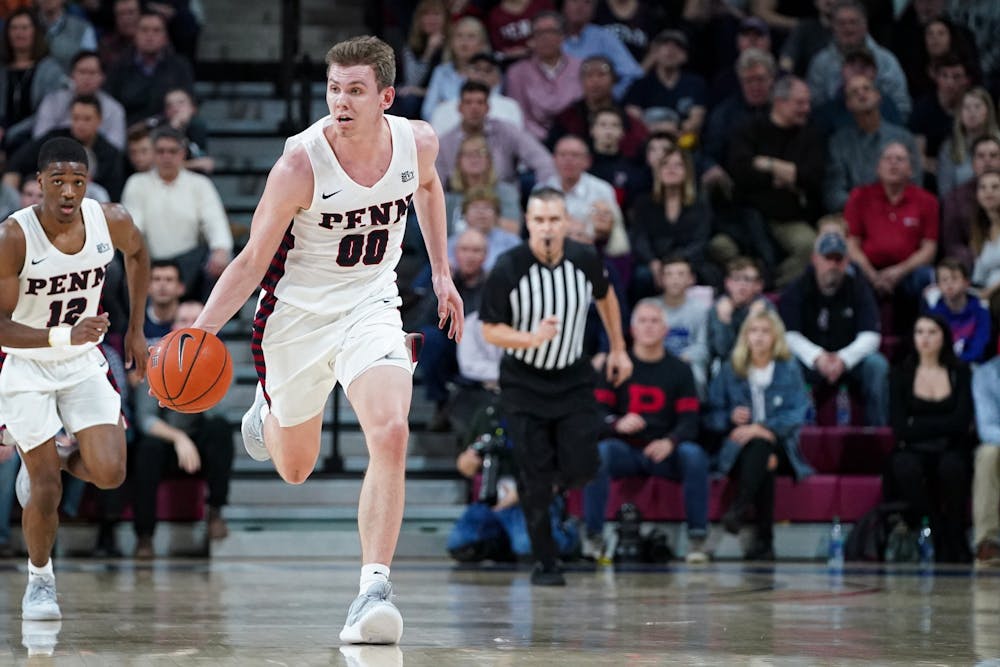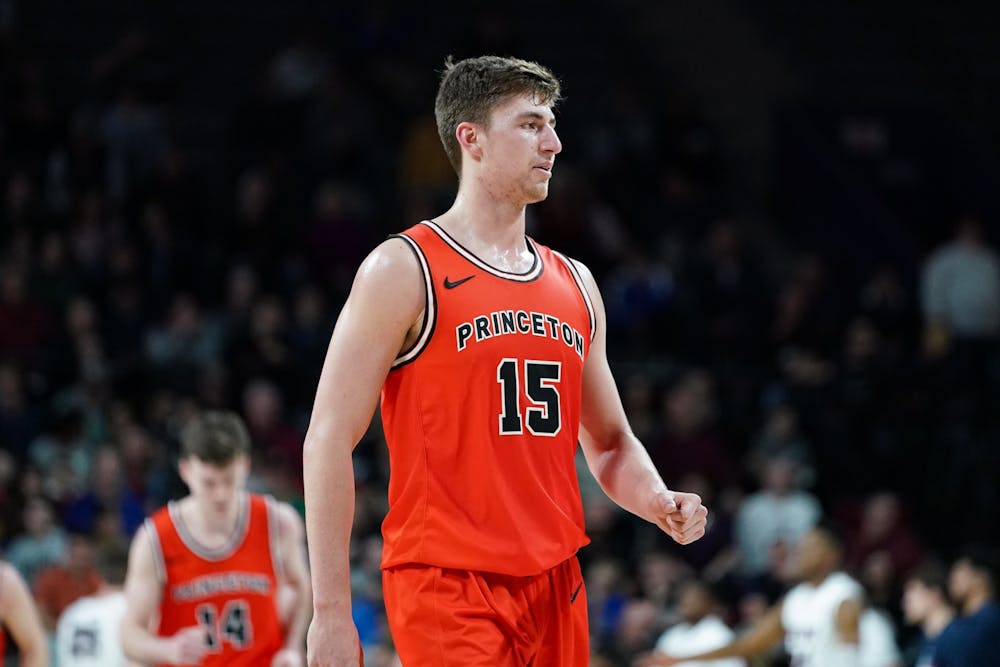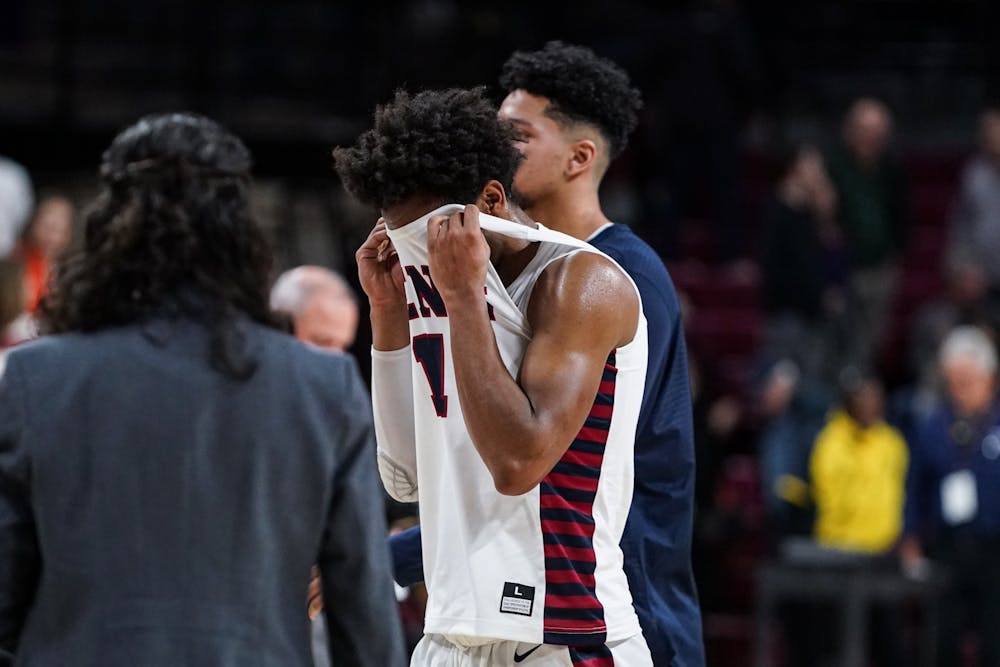
Heading into Ivy League play, Penn men’s basketball’s offense was cooking.
During a difficult nonconference schedule, the Quakers were consistently able to put up points, scoring over 80 points on six different occasions. Included in this were performances against Alabama, Providence, and Arizona, all of which have bigger and more athletic defenders than the Red and Blue face in the Ancient Eight.
That makes the team’s performance in their two games against Princeton in the last seven days even more confounding. The Quakers put up 64 and 58 points in the two contests, which mark two of the three lowest totals they have put up all season. The Tigers, who had previously only held their opponents to fewer than 65 points once this year, suddenly looked like lockdown defenders.

There are a few different potential explanations for this, and they each probably have some merit. The first is that Penn, in its current form, just doesn’t match up well with its rival. Senior center Richmond Aririguzoh has neutralized the Quakers in the paint over the last two seasons, and 6-foot-7 guard Ryan Schwieger gives the team matchup problems all over the court.
A second explanation is that Penn’s schedule doesn’t allow it to be optimally prepared for two of the most important games of the year. From Dec. 4 to the first Princeton game on Jan. 4, the Quakers only played against a Division I opponent once, and that was a win against a Howard team that is 2-14 on the season.
Playing the Princeton games back-to-back over winter break has never made sense, and the inability of the teams make sacrifices in other parts of the schedule to prevent it from happening continues to be disappointing. It’s unrealistic to expect the Quakers to play at their best after such a long break, and that likely contributes in some part to their struggles.

A third reason for the Red and Blue’s lack of success, and the one that will have the most ramifications for the team moving forward, is extremely poor three-point shooting. The Quakers shot a shocking 8-for-44 (18.2%) from beyond the arc during the two-game series. When so many possessions end in missed threes, there are inevitably going to be problems producing on offense, and that’s exactly what happened for Penn.
Coach Steve Donahue will hope that these results were just an outlier, since his threes- and layups-centered offensive philosophy only works if the team is shooting well from the outside. There’s good reason to think that might be the case, as the Red and Blue were making a respectable 34.6% of their triples going into the second Princeton game. In their best games, the Quakers were even better, including an impressive 11-of-22 performance from three in a big win against Providence on the road.
For the Red and Blue to be successful and rise to the upper echelon of the Ivy League, those performances need to move closer to the norm. Other than senior forward AJ Brodeur, Penn doesn’t have a consistent scorer in the paint, so the team will inevitably be reliant on the three. Without guards Jordan Dingle and Ryan Betley, the team’s top two scorers from the outside, hitting threes at better than the 3-for-19 clip they combined for over the two games, the team will struggle.
It might be scary as a Penn fan to realize that the Quakers are so reliant on something as variable and unpredictable as three-pointers, but that’s the reality. Now, they just need to start hitting shots again.

MICHAEL LANDAU is a Wharton junior from Scarsdale, N.Y. and a Senior Sports Editor for The Daily Pennsylvanian. He can be reached at landau@thedp.com.
The Daily Pennsylvanian is an independent, student-run newspaper. Please consider making a donation to support the coverage that shapes the University. Your generosity ensures a future of strong journalism at Penn.
Donate







